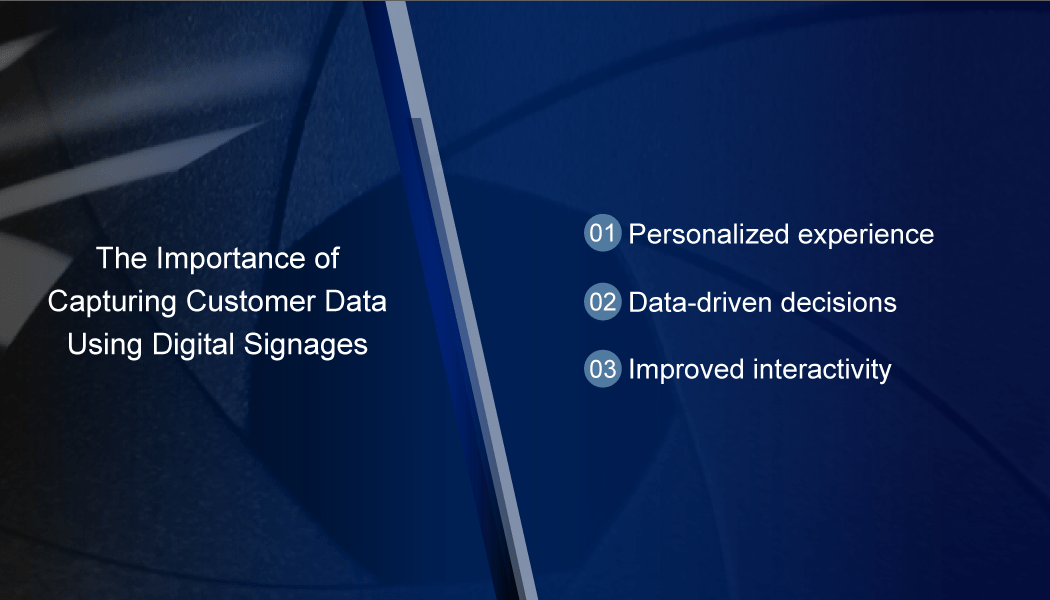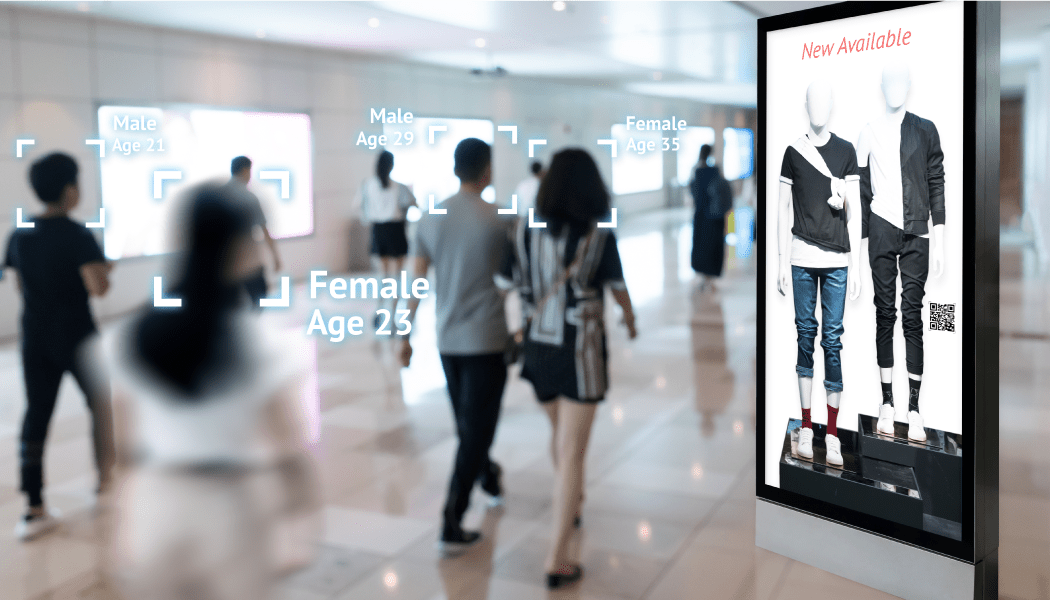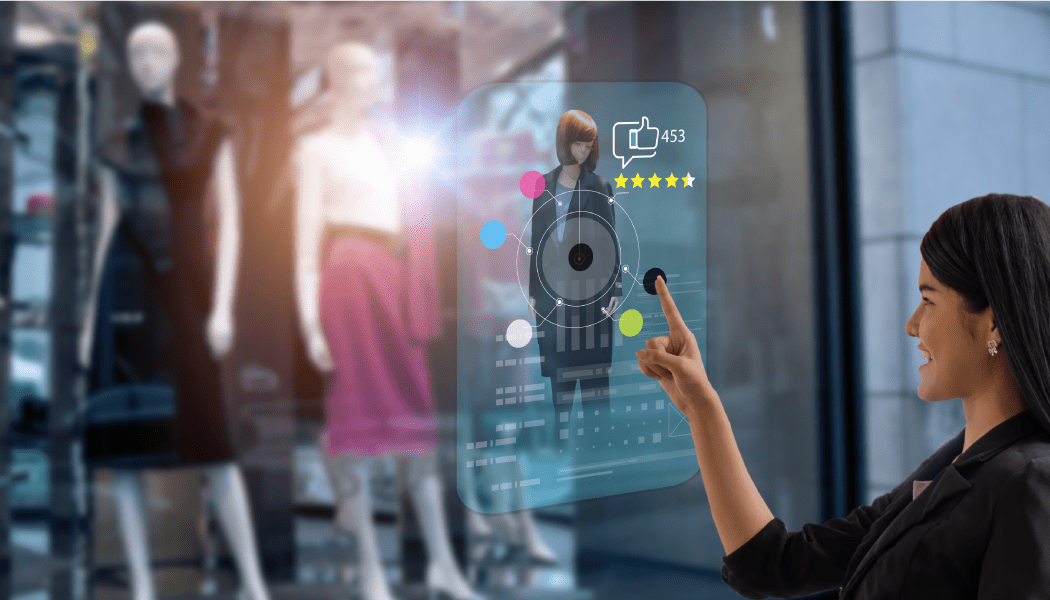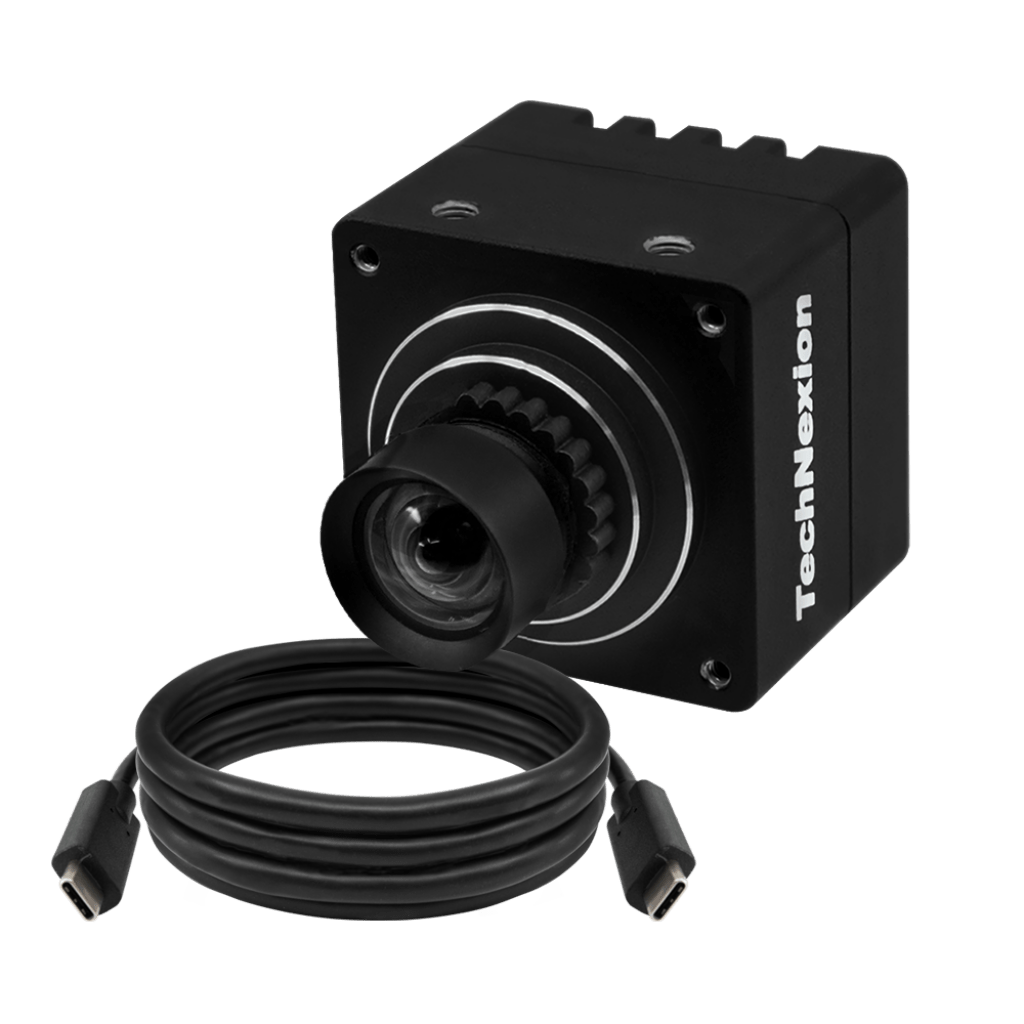This blog post was originally published at TechNexion’s website. It is reprinted here with the permission of TechNexion.
The retail landscape has changed significantly in recent years, propelled by technological advancements. The COVID-19 pandemic posed new challenges to traditional retail spaces, which resulted in the need for more innovative communication mediums. To offer customers memorable experiences tailored to their individual preferences, retailers and advertisers must showcase the right product at the right time. Smart signages have come to the fore as a modern solution for this – they are intelligent, adaptable displays that provide personalized experiences to bridge the gap between sellers and ever-evolving customers.
What Are Smart Signages?
Smart signage represents the next generation of display communication in the retail sector. Embedded with advanced technologies such as cameras and sensors, they can interact dynamically with their environment and audience. With this capability, they offer features like real-time content updates, emotion detection, and personalized promotions. Unlike traditional static signages, smart signages can change content in real-time, responding to various triggers or inputs.
Embedded vision is the key technology driving the evolution of smart signages. By integrating cameras and sensors, they can “see” and “interpret” their environment to recognize customers and predict their preferences. Smart signages have also become powerful analytics tools – enabling retailers to gain insights into customer behavior, preferences, and patterns. This invaluable data can be used to tailor marketing strategies, optimize store layouts, and enhance overall customer experience for maximum impact.
The Role of Cameras in Smart Signages
Smart signages are becoming increasingly interactive, with cameras leading this transformation. Cameras enable these digital displays to engage with customers in real-time by recognizing their facial expressions, analyzing their behavior, and collecting valuable data on customer preferences. This helps businesses deliver more personalized experiences that can increase customer engagement and loyalty.
How Cameras are Integrated into Smart Signages
Smart signage cameras can capture data about the viewers and their interactions, allowing the signage to display tailored content. Embedded within the frame of the signage (or attached externally in a discreet manner in some cases), these cameras are often equipped with advanced sensors and lenses that can capture high-resolution images and videos.
This captured data is then processed locally using edge computing or sent to a centralized server for analysis. Advanced software algorithms such as artificial intelligence (AI) and machine learning (ML) analyze this data, drawing on facial recognition algorithms that can identify a viewer’s age, gender, and mood.
The Importance of Capturing Customer Data in Real-Time

Real-time data capture using smart signages offers a plethora of advantages:
- Personalized experience: Smart signages display content that connects with the viewer by evaluating their demographics and behavior, resulting in a more personalized and engaging experience.
- Data-driven decisions: Retailers and marketers can discover their customers’ preferences, peak viewing periods, and content efficacy by collecting data. This information can guide marketing strategy, content production, and positioning strategy.
- Improved interactivity: Some smart signages enable viewers to engage with the content through gestures or touch. This is made easier by using real-time camera data to follow the viewer’s motions and modify the content accordingly.
Smart Signages Beyond Retail

While a vast majority of smart signages are deployed in retail stores, they are also installed in metro stations, bus depots, fueling stations, and even busy streets. In fact, there is a model that has emerged recently where businesses in the real estate sector use smart signages as an advertising space to monetize their spaces in a newer way.
Here, entities like land & building owners, fueling station owners, and governments are installing smart signages in spaces they own. The smart signages will be equipped with embedded cameras and AI algorithms that make it possible to show personalized ads to people who pass by.
For example, consider a smart signage installed in a metro station near the exit gate. That’s a great advertising space for nearby restaurants, hotels, supermarkets, footwear shops, etc. Leveraging cameras and AI, they can show customized ads to people exiting the station based on their demographic characteristics. A footwear shop advertising on the signage can show the latest and most trendy women’s footwear collection to young women who pass by – thereby maximizing the possibility of attracting them to the outlet.
One key advantage of smart signages is that they can measure the duration for which people are exposed to ads. Advertisers are charged only for that duration. This eliminates money wastage and ensures that ads are shown when the probability of winning a customer is the highest.
In short, smart signages involve combining the best of technology and real-world interactions to offer an enhanced experience for shoppers while increasing revenue and profits for advertisers.
Challenges Faced by Outdoor Smart Signages and the Need for High-Quality Image Extraction
Outdoor smart signages face a unique set of challenges compared to their indoor counterparts:
- Variable lighting: From the bright afternoon sun to the dimmer light of dawn, outdoor signages must struggle with varying lighting circumstances. This may impair the camera’s capacity to take clear pictures. In such a scenario, a high dynamic range camera is usually recommended.
- Environmental variables: It might be difficult to extract high-quality photos when rain, fog, dust, and other environmental variables obstruct the camera’s field of vision. In addition, these conditions may affect the camera hardware itself. Cameras with IP-rated enclosures are used to avoid this (For example, TechNexion’s VLI-AR0522-M-S85-IR comes with an IP68 enclosure. There are more such camera solutions in our portfolio).
- Diverse audience: Outdoor signages cater to a more diversified audience continuously on the go, making it critical to acquire and analyze data fast.
Given these obstacles, there is a pressing need for high-quality image extraction in outdoor signages. At the same time, indoor signages are also very demanding nowadays in terms of image quality. Advanced cameras with capabilities such as High Dynamic Range (HDR), infrared sensors, and image stabilization are employed to ensure good picture capture. Furthermore, strong software algorithms assist in filtering out noise and improving image quality, guaranteeing that the data gathered is reliable and useful.
Key Camera Features for Effective Smart Signages
Smart signages are revolutionizing how businesses interact with customers, offering a more personalized and engaging experience. To ensure these signages can deliver this experience, they must be equipped with specialized cameras featuring high-quality data capture capability and advanced software algorithms for optimized performance.
Let us look at the most critical camera features in this section.
Field of View (FOV)
The field of view (FOV) is an important factor when it comes to choosing a camera for signage. It refers to the extent of the observable environment that a camera can capture at any given moment. A wide FOV ensures that the camera captures a larger area in front of the signage, enabling it to display targeted content to multiple viewers simultaneously – especially crucial for signages in expansive spaces or high footfall areas. This has applications for retail spaces, ensuring more customers are captured within the camera’s range.
Autofocus
Autofocus is a camera feature that adjusts the lens to ensure the subject is in sharp focus, making it an important tool for smart signage. There are two types of autofocus: Contrast Detection and Phase Detection. Contrast Detection measures the contrast within the sensor until it finds enough contrast to find it in focus. At the same time, Phase Detection divides incoming light into pairs of images and compares them. With autofocus, viewers at varying distances from the display can be captured in clear focus with high-quality data.
Here, it is to be noted that not all signages will need an autofocus camera. If the working distance is fixed, a fixed focus camera might give a better output compared to an autofocus camera with comparable features.
High Dynamic Range (HDR)
High Dynamic Range (HDR) is a technique that allows cameras to capture a broad range of brightness levels, from dark shadows to bright highlights. This is especially important for smart signages placed in challenging lighting conditions, as HDR prevents overexposed or underexposed sections when capturing images. HDR also helps capture clear facial features in environments with variable lighting, essential for facial analysis and biometric verification. Though there is no standard definition, a dynamic range value of more than 100 dB is usually considered high.
High frame rate
Frame rate refers to the number of individual frames that a camera captures each second. It is an important factor in video capture, as it determines how smoothly and accurately our footage will turn out. A high frame rate ensures smooth video capture, especially when tracking fast-moving subjects or capturing quick interactions, providing seamless data for real-time analysis. This is particularly useful in busy areas where people are constantly on the move, ensuring that every individual and their interactions are captured without any lag. A frame rate of about 30 fps is sufficient in most smart signages, though this could vary depending on the specific end application requirements.
Resolution
As in the case of other embedded vision applications, resolution is critical in signages too. While a resolution of 3 to 4MP is enough in most cases, product developers today prefer to go with a high resolution like 4K. This gives them more flexibility for performing techniques like zoom and binning. This also often becomes a selling point for them.
AI integration
Integrating with AI-powered software allows a camera to capture and analyze data in real-time. This facilitates easier content customization based on viewers’ demographics, behavior, or interactions. Applications of this technology in smart signages include facial analysis and people counting. Facial analysis can recognize facial features such as age, gender, or mood, while people counting estimates how many viewers are in front of signage at any given time.
The Future of Smart Signages in Retail

Smart signages allow businesses to engage with their customers innovatively. Equipped with new-age embedded vision cameras and AI technology, these interactive displays bridge the gap between digital and physical shopping experiences, providing customers with more enriched in-store visits.
Given below are some of the future developments that are likely to happen in the space:
- An all-in-one shopping interface: Today, we have smart kiosks in many retail outlets and shopping malls where shoppers can place orders by interacting with them. On the other hand, we also have smart signages that are capable of delivering dynamic content. The future might see both merging – further improving shopping convenience and experience.
- Integration of virtual reality: The use of virtual reality-enabled smart signages has already begun in the retail and apparel industry. Shoppers can now view how they would look in a particular outfit instead of actually trying it using what are called smart mirrors. Smart mirrors are nothing but a type of smart signage that combine embedded vision, AI, and virtual reality to offer a ‘cool’ product experience to customers.
- Real-time data analytics: Retailers can employ smart signages to collect real-time data on customer traffic, dwell time, and product interactions to improve shop layouts, product placement, and marketing strategies.
- Seamless omnichannel experience: With IoT and cloud computing connectivity, smart signages can sync with internet platforms, guaranteeing customers a consistent brand experience whether they purchase online or in-store.
Role of TechNexion in the Future of Smart Signages
TechNexion provides robust embedded camera solutions for smart signages allowing businesses to handle the demands of high-resolution graphics with real time data processing and multi-modal interactions. From small interactive kiosks to massive outdoor digital billboards, we have camera solutions that fit every need. They are also ‘AI-capable’, making them ready-to-integrate solutions for smart signages. Learn more about our embedded camera solutions here.
Beyond just providing hardware solutions, we have built a robust ecosystem with extensive support to businesses, helping them easily integrate our camera modules into their smart signages. Connect with us today!



